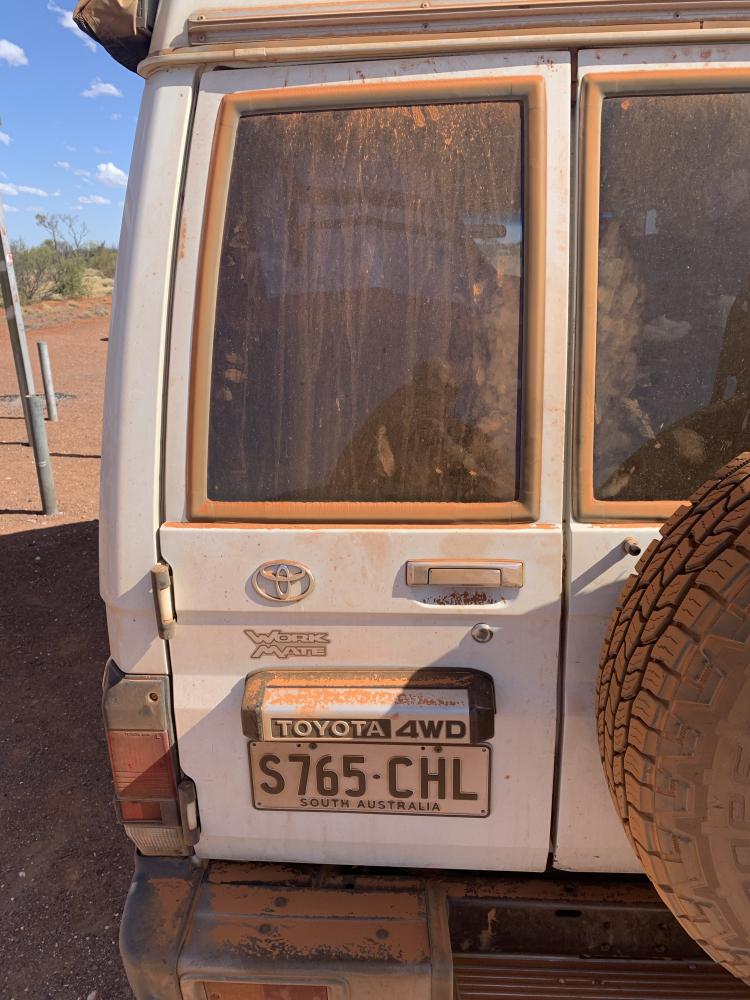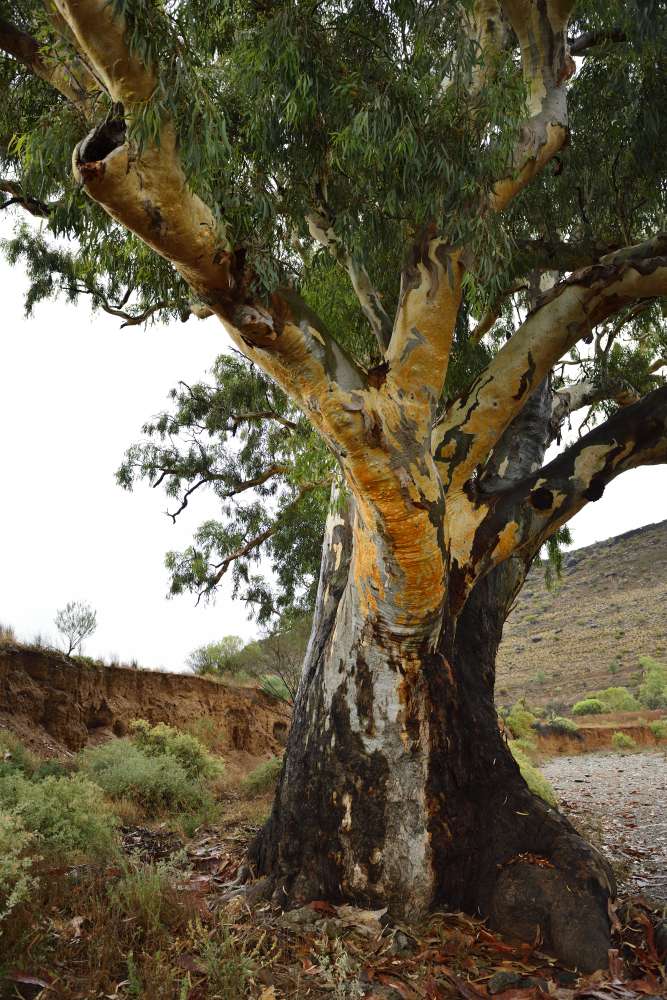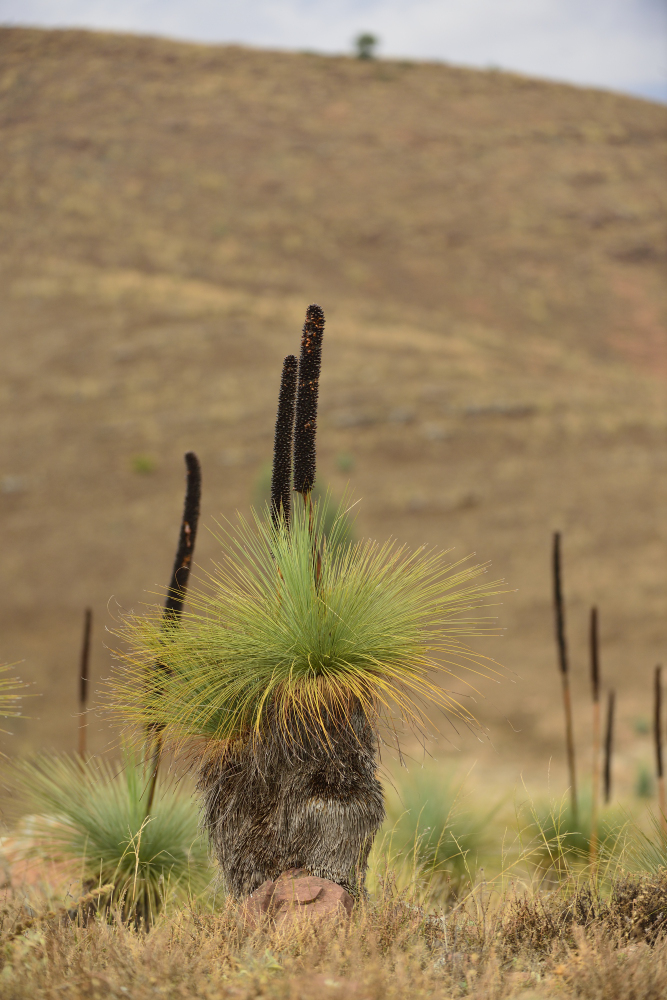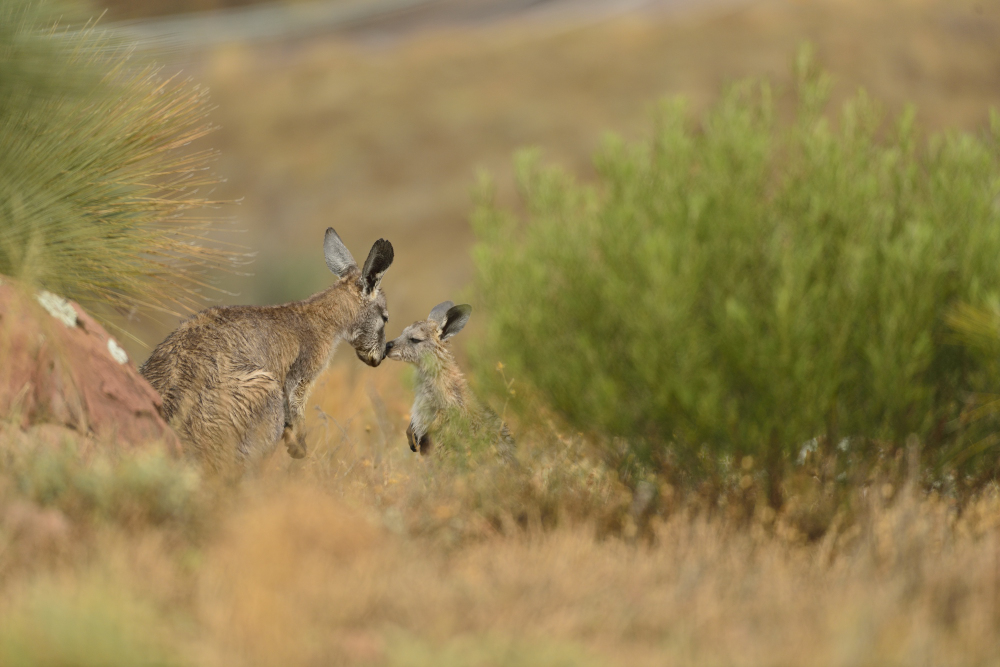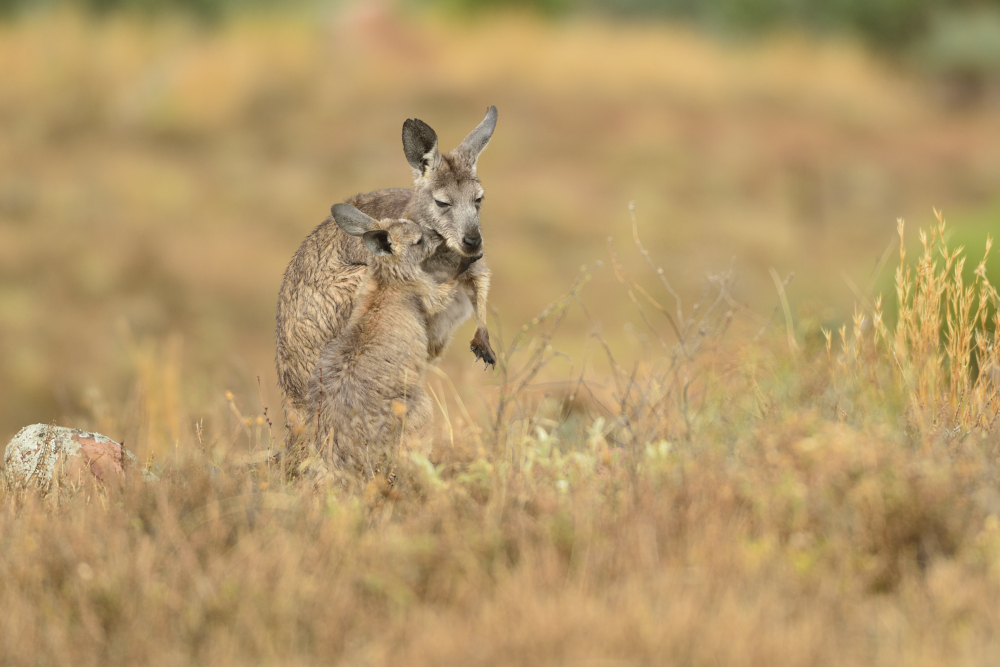Great landscapes and wild animals.
Now that we're heading south, it's time to explore the adventure trails a little more. A 100 km dirt road leads us out towards the Kings Valley and the landscape is real outback. Along the way, we pass impact sites for Henley's meteorites, i.e. 4000 years ago the impact took place - today you have to rise a little above the landscape to see the shape of the craters.
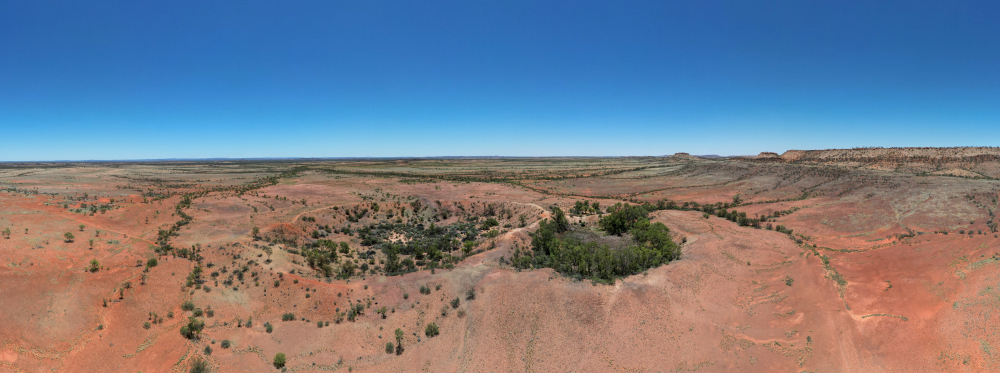
Kings Valley is a sharp ridge running through the landscape. In the high season, it is very visited, with guided tours and offers for helicopter flights - for a small fortune. Fortunately, it is also possible for the more independent travelers to find places where nature can be enjoyed.
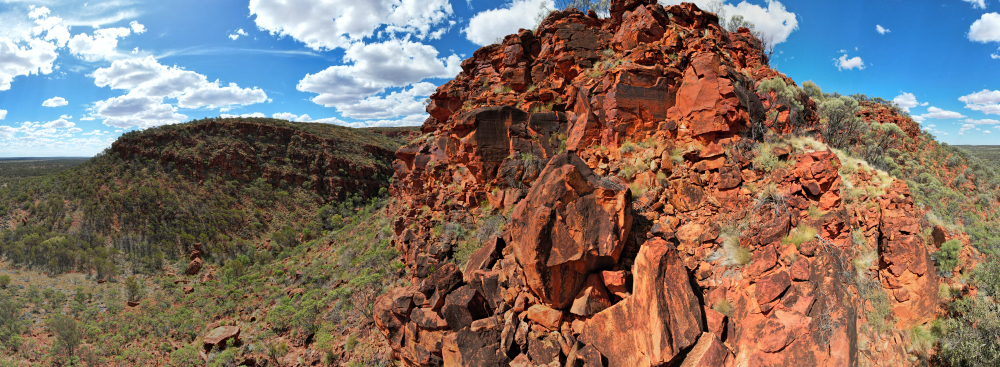
We find a lookout point that overlooks the valley. In fact, 24 hours of camping is also allowed on site – we can see that others have used the opportunity over time. If we had shown it - then we would probably have gone for another experience where you could sleep outside next to the attraction.
It's hot while we're walking around up there, so hot in fact that the lizards sitting in the sun stand on tiptoes or steps so as not to burn their feet.
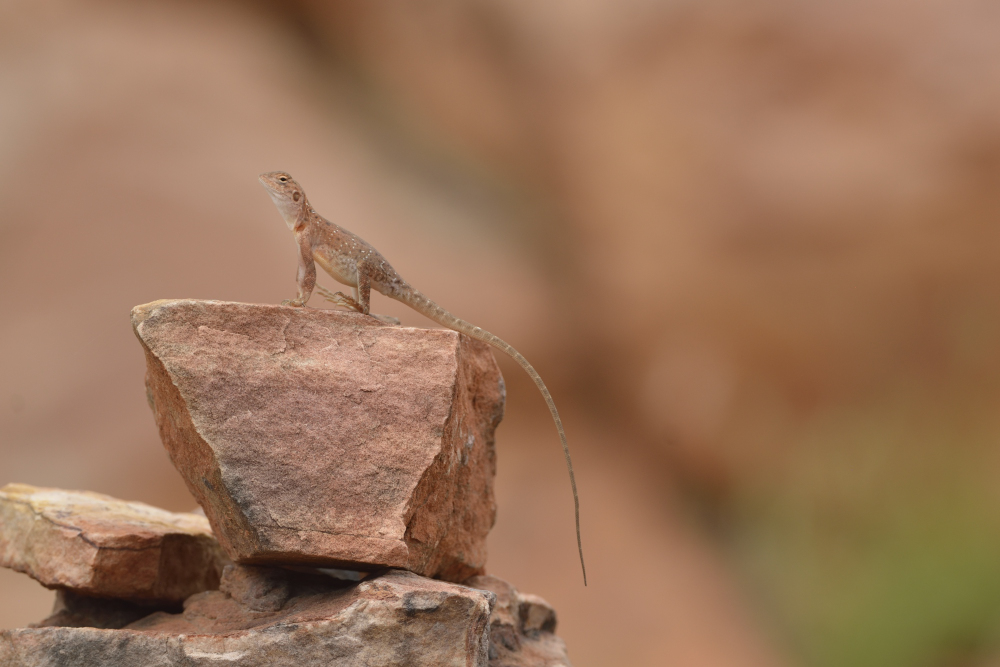
On the way out of Kings Valley we can see some animals crossing the road. It is very far away and the heat haze makes it difficult to see details.
Yay, it's camels again? We get closer, but can't see any humps - no matter how much we strain our eyes.
Well... but then it's probably cows. Hmnn... as we get closer, horse pears begin to lie at the edge of the stand.
Ouch!! It is the Australian population of wild horses.
A smaller herd runs across the road. They are quickly deep in the vegetation and have made themselves invisible.
Patience pays off, after a while we find them. Here it is clear that they have returned to their original wild state - in relation to the behavior of the domestic horses. The biggest stallion controls the herd, he estimates that they don't want to get too close to people - and therefore leads the herd away from us. The mares follow and the many young horses and foals immediately follow the mother.
It's a group dynamic that's really nice to watch. In the 80-100 years that the horses have been left to themselves - they have learned the skills needed to be natural horses again.
The horse is an imported animal in Australia, used for work and transport. But as the car became more widespread, many owners let their animals loose so that they could fend for themselves. It is the population that has now learned to be wild again.
On a trip of this type, there is a need for various supplies which must be covered. Over time, we have filled up with fuel and eat varying quality of road food in an incredible number of places. But have definitely found out - that in Australia you have to visit a Roadhouse - when one exists.

A simple visit to Stuarts Roadhose, for example, can lift your mood several degrees and give you a cultural outback experience. In the Northern Territory, that political correctness has not yet arrived. The owners have a nice 1:1 sense of humor and the service is very straightforward.
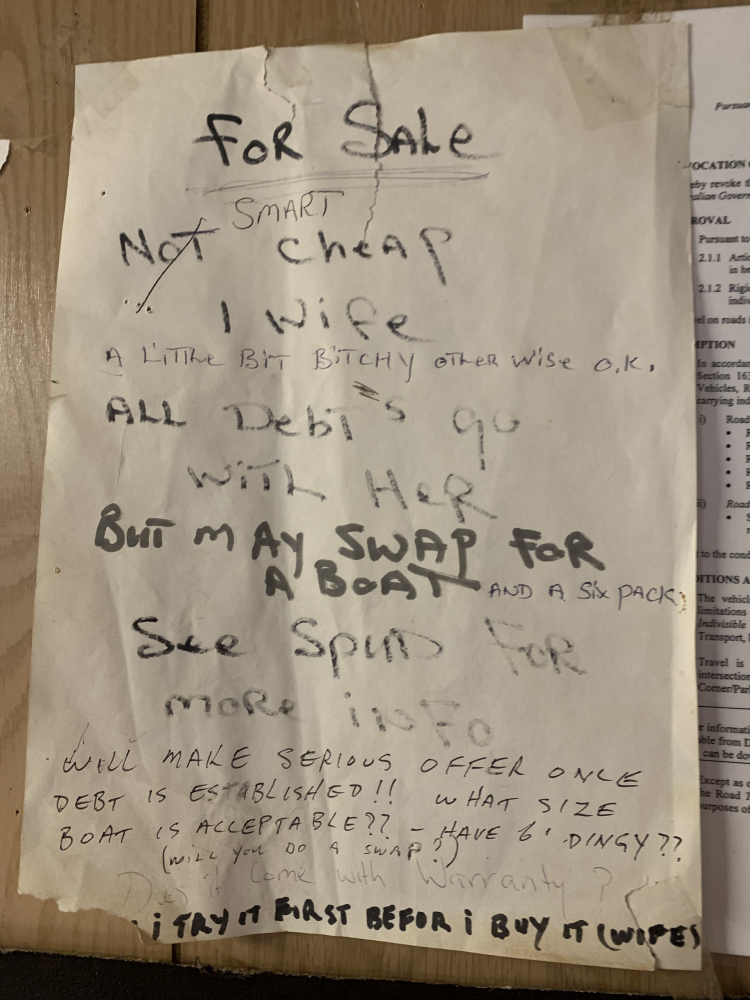
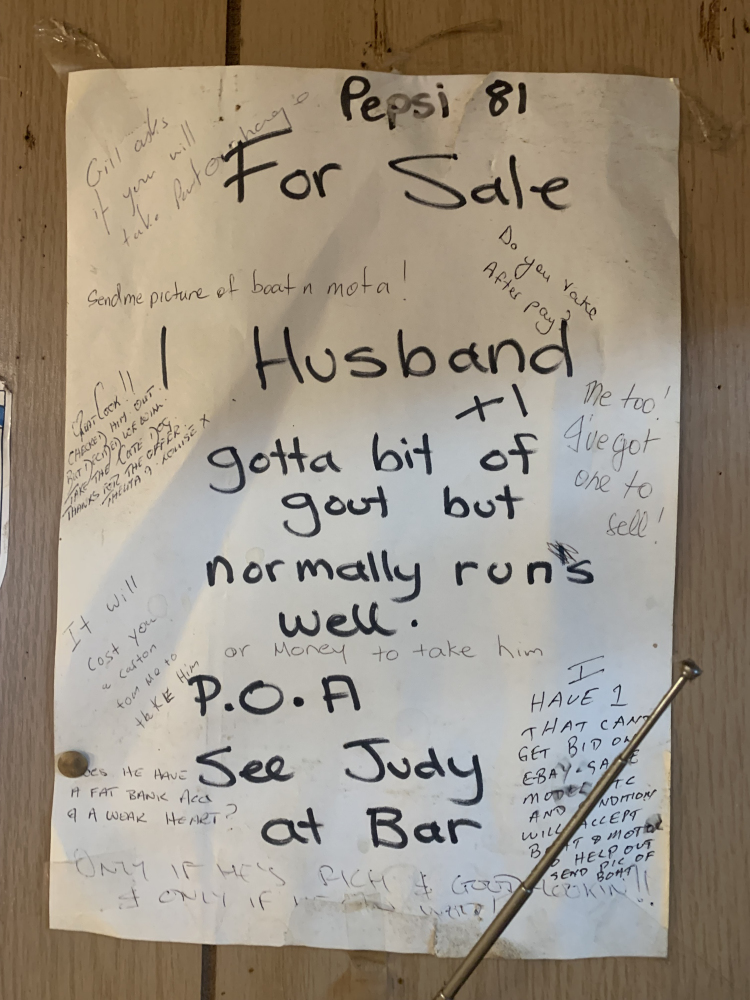
Sitting in there and having a hearty meal - sends you out with a big smile on your face. As well as the admonition that outback residents - are wonderful people.
When was the last time you could say the same after a visit to a gas station in Denmark??
Our driving conditions change a lot, from very dusty gravel and dirt roads where the road can disappear into nature.
To where it rains. In places where it rarely rains in Australia, the first 5-8cm of the soil layer consists of incredibly fine dust. Once it gets moist, it transforms into a brown soapy substance.
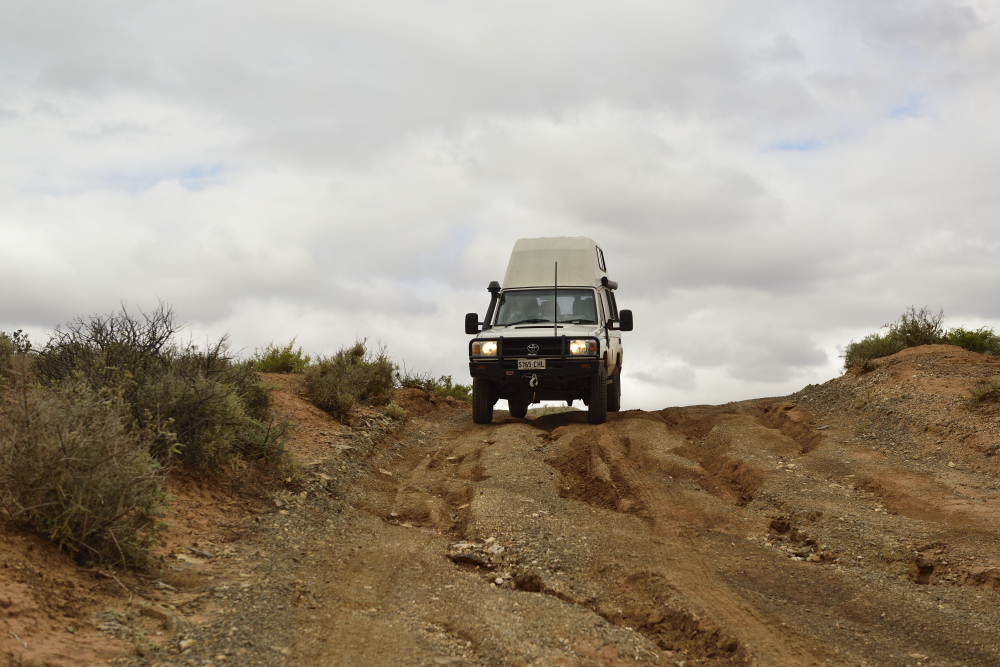
It surprised us on the way out into the Flinders Ranges. Out of nowhere, the rear end slides out and we stop up on a small slope, at a 45 degree angle to the road.
Aha...you should take that seriously and turn on 4×4 when the dirt road gets wet. We are slowly working our way forward - now with more directional stability. After 20km, however, we reach a steep climb - which, regardless of 4×4 and goodwill - cannot be defeated at all. Fortunately, there are also other camp sites available - than the one we had planned. Flexibility ensures success.
The Flinders Ranges offers hiking in vast landscapes, lots of wildlife – both rain and dry – we're excited about the place.
